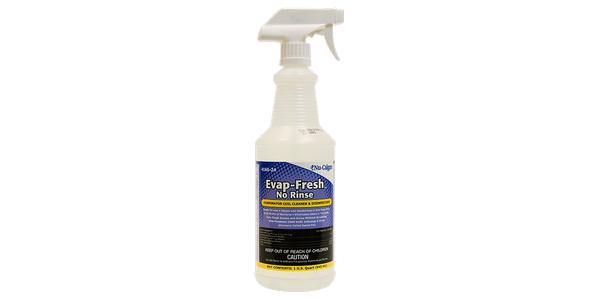Danfoss Showcases Advanced, Low-GWP Ammonia Refrigeration Systems at ATMOsphere America 2015
Danfoss showcased advanced, low-GWP direct expansion ammonia refrigeration systems as a safe, proven technology during a presentation at ATMOsphere America 2015, held June 25-26 in Atlanta, Georgia. The fourth annual conference gathered more than 300 industry leaders to discuss current and future natural refrigerant market trends and related technology innovations and regulatory issues in North America. This was the fourth year Danfoss was a sponsor of the conference.
“Ammonia is a proven refrigerant, with some of the best heat transfer characteristics of all refrigerants,” said Terry Chapp, national business development manager at Danfoss, during his presentation alongside Jeremy Olberding, vice president, sales, Colmac Coil.
Ammonia is a natural refrigerant with zero ozone depletion potential and zero global warming potential. It is also inexpensive and plentiful, making advanced DX ammonia systems an attractive option for industrial refrigeration system designs.
At the same time, ammonia is toxic – and, in unusual cases, can be flammable. “Fortunately, a number of emerging technologies in various stages of development are targeting the reduction of refrigerant charge at either the component or system level,” said Chapp. “In fact, advanced DX ammonia systems allow industrial refrigeration systems as large as 1,800 TR with a system ammonia charge under 10,000 pounds. These systems have the potential to eliminate a significant portion of the regulatory and liability burden that accompanies large-charge systems.”
To highlight the success of advanced DX ammonia systems, Chapp and Olberding reviewed a project that used Danfoss motorized expansion valves and superheat controllers as part of one of the first large-scale subzero systems operating in North America.
Joliet Cold Storage is a cold storage warehouse and logistics facility for the food industry that opened in 2014 in Joliet, Illinois. The facility was planned for construction in two phases: phase I with 169,000 square feet of subzero freezer space and 25 truck doors in a 65-foot-wide, +40 F dock and phase II to double the freezer and dock space. The phase I freezer space is subdivided into a large, -10 F freezer and two convertible rooms, each measuring 38,000 square feet, that can be run at temperatures ranging between -10 and +35 F for flexibility in product storage.
During the planning stage, the refrigeration subcontractor presented two options for the warehouse: a pumped recirculated liquid ammonia system and a DX ammonia system. A conventional PRL design would require about 25,000 pounds of ammonia for phase I and more for phase II, putting the facility over the 10,000 pound threshold that requires a Process Safety Management/Risk Management Plan. However, the DX system would reduce the total ammonia charge for phases I and II to significantly less than 10,000 pounds, the PSM/RMP threshold.
Final analysis of the two estimates showed the DX system saved approximately $100,000 for the total refrigeration system first cost. When added to the advantage of lower ongoing cost, it made the DX system an easy choice.
A good superheat controller and expansion valve are critical to managing a low temperature DX system. The JCS system uses Danfoss expansion valves and superheat controllers to provide components in matched, modular packages. When the Danfoss ICM Motorized Valve is coupled with the Danfoss EKC315A Superheat Controller, the entire direct expansion process is controlled, providing the precise amount of liquid to maintain the required heat transfer without dragging liquid beyond the evaporator and endangering the compressor.
The JCS system also features a DX evaporator that provides proper liquid distribution at the coil inlet and enhanced inside tube surfaces, which causes liquid to wet the entire tube surface with refrigerant. In addition, explosion bonded dual-metal couplings allow welded joints between aluminum tubes in coils and stainless steel piping to keep air out of the system at the low-suction pressures of low-temperature ammonia.
ATMOsphere America gathers key industry players to support and foster the market uptake of natural refrigerant-based technologies. The two-day conference uses presentations, panel discussions, technology case studies and workshops to demonstrate that these technologies are both an environmentally and economically viable solution for the heating, ventilation, air conditioning and refrigeration industry in North America.


